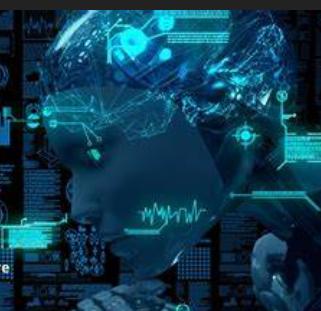Imagine waking up to a world where your morning coffee is brewed to perfection by a machine that knows exactly how you like it. Your commute is smoother because traffic lights adjust in real-time to reduce congestion. At work, a virtual assistant helps you prioritize tasks, while your doctor uses AI to predict potential health risks before they become serious. This isn’t science fiction—it’s the reality of today, powered by Artificial Intelligence (AI).
AI has quietly woven itself into the fabric of our lives, often in ways we don’t even notice. From the mundane to the extraordinary, it’s reshaping how we live, work, and interact with the world. This article explores the subtle yet profound ways AI is transforming our daily lives and industries, and what it means for the future.
AI in Everyday Life: The Unseen Helper
Think about the last time you asked your phone for directions or used a voice assistant to play your favorite song. These interactions, once futuristic, are now routine. AI powers the algorithms behind these tools, learning from your habits to provide personalized experiences.
For example, streaming platforms like Netflix and Spotify use AI to analyze your preferences and recommend content you’re likely to enjoy. It’s not just about convenience—it’s about creating a seamless connection between technology and human behavior.
AI in Healthcare: Saving Lives Behind the Scenes
One of the most impactful applications of AI is in healthcare. AI-powered tools are helping doctors diagnose diseases faster and more accurately. For instance, AI algorithms can analyze medical images, such as X-rays or MRIs, to detect early signs of conditions like cancer or heart disease.
But it doesn’t stop there. AI is also being used to predict patient outcomes, optimize treatment plans, and even assist in surgeries. These advancements are not only improving patient care but also reducing the burden on healthcare professionals.
AI in Industry: The Rise of Smart Factories
In the industrial sector, AI is driving a new era of efficiency. Smart factories equipped with AI-powered robots and sensors are revolutionizing manufacturing. These systems can monitor production lines in real-time, identify potential issues before they cause downtime, and even adapt to changes in demand.
For example, in the automotive industry, robots equipped with AI can perform complex tasks like welding and painting with precision and speed. This not only boosts productivity but also ensures higher quality and safety standards.
The Future of AI: What Lies Ahead?
As AI continues to evolve, its potential is limitless. One of the most exciting frontiers is autonomous vehicles. Companies like Tesla and Waymo are leading the charge, developing self-driving cars that promise to reduce accidents, ease traffic congestion, and provide mobility solutions for those who can’t drive.
Another promising area is education. AI-powered tutoring systems can adapt to individual learning styles, providing personalized support to students. This could democratize education, making high-quality learning accessible to people around the world.
Ethical Considerations: Balancing Progress and Responsibility
While the benefits of AI are undeniable, it’s crucial to address the ethical challenges it presents. Issues like data privacy, algorithmic bias, and the potential for job displacement must be carefully managed.
For instance, AI systems rely on vast amounts of data, raising concerns about how that data is collected and used. Additionally, algorithms can inadvertently perpetuate biases if not properly designed. Policymakers, technologists, and society as a whole must work together to ensure AI is developed and deployed responsibly.
Conclusion: A World Transformed
AI is no longer a distant dream—it’s here, quietly reshaping our world in ways both big and small. From the way we start our mornings to how we receive medical care, its influence is everywhere. As we move forward, the challenge will be to harness this powerful technology for the greater good, ensuring it benefits everyone while addressing its risks.

